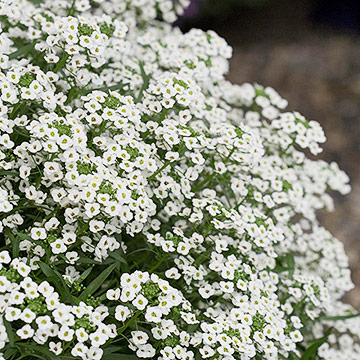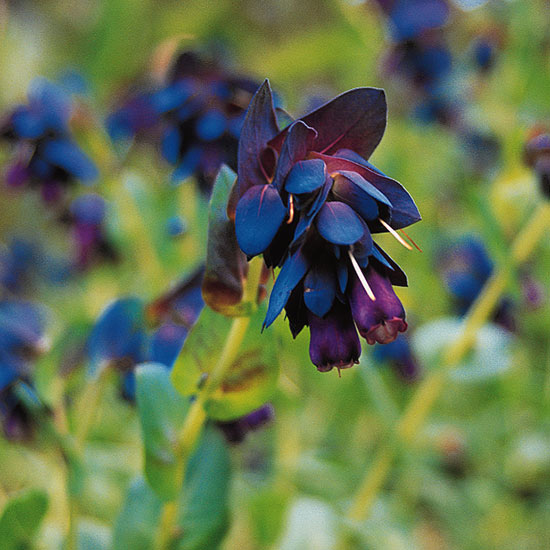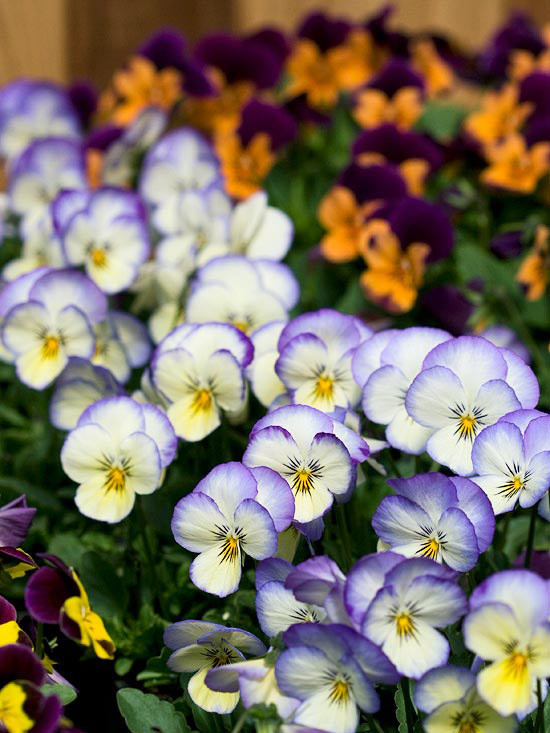





Gardeners in the South and Southern California can choose from a wealth of plants -- annuals and perennials -- that prefer cooler temperatures and offer beautiful winter flowers.
continue reading belowIt's important to understand that annuals are just what their name implies: Plants that grow, set seed, and die within a year. Although some plants grown in northern gardens are treated as annuals, many are truly tender perennials that can't survive winter cold. These annuals add color to a winter landscape:
Complement your winter flowers with attractive evergreens.

With 12-inch mounds of tiny, fragrant flowers in pink, white, or lavender, sweet alyssum (Lobularia maritima) is a favorite cool-growing annual. Use it to edge beds and paths, or tuck it into small, dark spaces. Grow it in full sun to part shade in well-drained soil. Although it tolerates some dry conditions, for best performance, keep it watered. Expect alyssum to go dormant during hot weather.
Learn more: Grow sweet alyssum plants.
The bright yellow, cream, or orange blooms of calendula (Calendula officinalis) light up a garden. If the plant is grown without chemicals, the peppery petals may be used as an edible garnish or chopped into cream cheese or dips. Grow in full sun.
Learn more: Grow calendula plants.

Native to the Mediterranean, honeywort (Cerinthe major purpurascens) is an unusual and underused plant. Plant it in full sun or light shade. The plants, with silvery blue-green leaves and blue-purple flowers, can reach 2 to 3 feet tall and wide. It self-sows but dies out during hot weather.
Learn more: Grow honeywort plants.
Grow annual sweet peas (Lathyrus odoratus) on trellises or obelisks where the tendrils of this vine, native to Italy, can climb up to 6 feet. Enjoy the clusters of fragrant, ruffled blossoms as cut flowers. Start sweet peas from seed by soaking them in water for 48 hours, then plant in full sun.
Learn more: Grow sweet pea plants.
Although many perennials grow best in stronger light and warmer temperatures, these provide color in a winter garden:

Pansies (Viola x wittrockiana) and violets ((Viola) species) are the go-to standbys for cool-weather blooms. Their engaging "faces" top petals that come in bold or pastel colors. Plant pansies 4 to 6 inches apart in rich, well-drained moist soil in sun or light shade. Water and fertilize them regularly. Remove spent flowers to promote repeat blooms. Although they're perennials, pansies and violetss are short-lived because they can't tolerate heat. Some pansy varieties are more heat-tolerant than others; violets take more heat and may reseed.
Learn more: Grow pansies.
Pinks (Dianthus species and hybrids) are named not for their color -- although many are pink -- but because the edges of their serrated leaves look like someone cut them out using a pinking shears. The blooms often smell like an aromatic spice, such as nutmeg, ginger, or cinnamon. You can find many types of these short-lived perennials, including China pinks (Dianthus chinensis), that grow in 6- to 12-inch mounds of grasslike blue-green foliage. Sweet William (D. barbatus) grows taller, up to 2 feet. Cheddar pinks (Dianthus gratianopolitanus) and maiden pinks (Dianthus deltoides) are also part of the family. Grow them in full to part sun. Hardiness varies by species.
Learn more: Grow pinks.
You'll love the early burst of color from winter jasmine (Jasminum nudiflorum), a fast-growing evergreen shrub for full sun or light shade that offers lots of creamy-yellow flowers. It can reach 10 feet tall and wide and is hardy in Zones 6-9.
Learn more: Grow winter jasmine.
Offering one of winter's best scents, winter honeysuckle (Lonicera fragrantissima) shows off clusters of creamy-white flowers in late winter and early spring. It can grow 10 feet tall and wide and is hardy in Zones 5-8.
Copyright © www.100flowers.win Botanic Garden All Rights Reserved